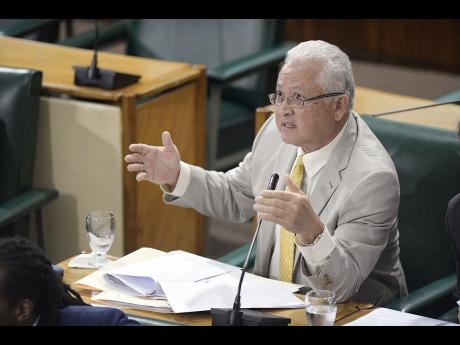Court backlog persists despite some improvements
A total of 4,274 new cases entered the Supreme Court across all divisions between April and July this year, while only 3,337 matters were completed during the period.
According to data from the Chief Justice's Statistics Reports for the Supreme Court Easter Term 2018, the High Court Civil and Matrimonial Divisions accounted for the largest number of new cases, with 1,571 and 1,366, respectively.
The Home Circuit (Criminal) Division was among the lowest, with 148 cases, and the Revenue Division had three new cases, a positive which Justice Minister Delroy Chuck was keen to expound on.
"This particular data shows more than just reduction in cases, but it may also be an indication of the downward trend in crime the country has been experiencing. We should look at the correlation," Chuck said in a statement to the House of Representatives yesterday.
The minister further disclosed that the Probate and Matrimonial Division accounted for the largest number of cases disposed of, together accounting for 68 per cent of all cases completed. The total number of cases filed was 23.71 per cent more than the previous term.
Chuck also outlined that two critical areas of focus for the chief justice are trial date certainty and case clearance rates.
Trial date or hearing date certainty is the proportion of dates that are set for trial or hearing which proceed without adjournment. He stated that the international standard for this measure is between 92 per cent and 100 per cent, and the Chief Justice has set a target of 95 per cent.
Chuck said in order to achieve trial date certainty, fewer cases are being set for trial on each day.
"In the short to medium term, this means that matters are being set for dates further ahead. However, this initiative has been introduced to ensure that matters which are set for trials actually proceed or have a greater likelihood of going ahead," said the justice minister.
Case clearance rate, on the other hand, speaks to the ratio of incoming to outgoing cases or new cases filed to cases disposed, regardless of when the disposed cases originated.
"The clearance rate can, therefore, exceed 100 per cent and needs to be greater than 100 per cent in order to reduce the backlog in the courts and prevent new cases from going into the backlog," said Chuck, pointing out that the international benchmark for case clearance rates is an average 90 per cent to 110 per cent annually.
He disclosed that the chief justice has set a target of 130 per cent to 140 per cent in order to reduce the backlog of cases in the courts.

